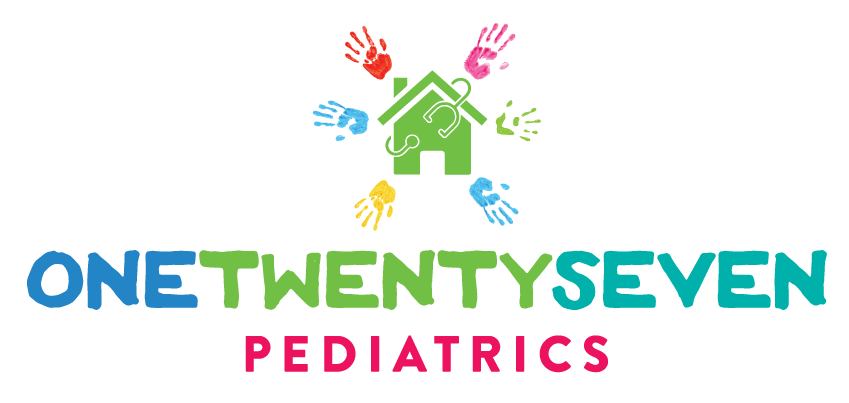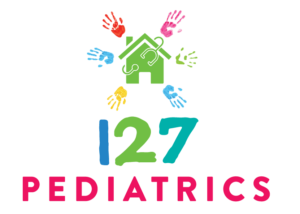Ear infections are one of the most common reasons that children visit their pediatrician. Additionally, they are the most common reason that children take antibiotics in early childhood. Leaving the doctor’s office with a prescription for Amoxicillin may not always be the best thing for your child. Pediatricians understand that some ear infections will get better without antibiotics.
In order to understand which ear infections need to be treated and which don’t, we need to know more information. Understanding the anatomy of the inner ear in children, knowing what germs cause ear infections and what reasons a child should receive antibiotics will help us understand this topic better.
Anatomy of the inner ear

Photo credit: Stanford Children’s Hospital
Kids get more ear infections than adults due to the structure of their inner ear. There are many terms that we need to understand in order to have a clearer picture of this topic.
Tympanic membrane: a thin layer of tissue that separates the inner ear from the outer ear.
Eustachian tube (or auditory tube in this picture): allows the inner ear to drain into the back of the nose.
Incus, malleus and stapes: small bones that work together to allow us to hear
External acoustic meatus (ear canal): passage from the outside of the ear to the tympanic membrane.
Middle Ear: space between the ear canal and the eustachian tube, cochlea and auditory nerve- this space is normally pressurized and filled with air
In younger children, the eustachian tube is straighter and floppier than in adults and older children. Due to this difference, when a small child has a cold or allergies, the fluid or congestion builds up in the inner ear. It cannot drain out well. This tube also serves as a superhighway from the back of the nose into the middle ear. Respiratory viruses and bacteria like to come in, hang out and not leave. The warm fluid environment allows for growth of the bacteria or virus. When they multiple, they cause problems because the middle ear space is so small. As the germs increase in number, the pressure inside the inner ear makes the tympanic membrane bulge out and causes your child to have ear pain.
Causes of Infection
Several high quality studies have looked at the causes for inner ear infections. There are common bacteria and viruses that are the main culprits. Strep pneumoniae, Haemophilus influenzae and Morexella Cattarhalis are the most common bacterial causes of ear infections. Flu and RSV are the most common viruses that cause them.
Often, viruses and bacteria team up and concurrently cause the same ear infection. There are certain measures that have changed which bugs cause the most cases of acute otitis media (ear infection). Immunization with PCV7 (and now PCV13) has greatly reduced strep pneumoniae as a pathogen for ear infections. It has also been shown to reduce the number of ear infections overall. You can read the study done in Pediatrics in 2017 here. There is also a highly effective vaccine against H. flu. If your child is immunized, they have a lower risk of ear infections as well as other vaccine preventable illnesses.
Antibiotics vs. no antibiotics
So how do pediatricians treat ear infections?
In 2013, the AAP updated their recommendations for the treatment of ear infections after examining many many studies on the subject. The definition of acute otitis media (ear infection) became stricter. A bulging tympanic membrane is one of the ways to diagnose an ear infection. Another way is to see fluid behind the tympanic membrane that is accompanied by signs of inflammation (fever, pain, redness of the eardrum, etc).
Almost everyone recommends treating an ear infection with antibiotics in a child younger than 6 months of age. A caveat to this recommendation is to start antibiotics in a baby less than 60 days old only after ruling out a more serious bacterial infection as a cause for the infant’s fever.
Between the ages of 6 months and 24 months of age, a period of observation without the use of antibiotics is allowable. However, often these kids fail to get better without antibiotics.
Finally, first line treatment for a child > 2 years old that has normal anatomy and a normal immune system is to observe them without antibiotics. The exception to this includes kids this age who have severe symptoms. Children with ear pain for greater than 48 hours or fever greater than 102 °F should be treated with antibiotics.
Observing a child with an ear infection does not mean do nothing. Ear infections can be very painful. Tylenol or Ibuprofen do the best job at relieving this pain. These medications relieve pain much faster than antibiotics alone.
Topical pain relievers have not been proven to help. In the recent past, the FDA mandated that medications such as Auraglan be discontinued. You can read more about it in a blog post here.

Closing remarks
If you would like a pediatrician that can diagnose your child’s ear infection remotely and give you medical advice, join our innovative medical practice. Above is a picture of the inside of Dr. Wadley’s ear made with the camera otoscope that all member families of 127 Pediatrics receive when they sign up for the practice.

© 127 Pediatrics, 2019, all rights reserved. 33 Main Street, Suite 160, Colleyville, TX 76034


